The Arrangement
In a step-by-step manner, I have developed an approach to aircraft design methodology at the conceptual stage that can be followed in the classroom, from the initial stages of finding a market to the final stages of freezing the aircraft configuration. In the aircraft industry, after the “go-ahead” is obtained, the development program moves to the next phase (i. e., the Project [or Product] Definition Phase), which is not within the scope of this book. The book covers two semesters of work: the first, from Chapters 1 through 13, encompasses the conceptual design; and the second, from Chapters 14 through 17, deals with a more detailed exposition of the first semester’s work, advancing the concept through more analysis. Some of the second-semester work on cost and manufacturing considerations may require outside, aeronautical – school assistance. The recommended two-semester curriculum is outlined at the end of this road map.
The chapters are arranged linearly; there is not much choice in tailoring a course. I attempt to keep the treatise interesting by citing historical cases. The main driver for readers is the motivation to learn. Except for Chapter 1, the book is written in the third person. (Actual coursework starts in Chapter 6 after a brief mock market survey by the students, as discussed in Chapter 2.)
I omit discussions of vertical takeoff and landing/short takeoff and landing (VTOL/STOL), as well as helicopters in their entirety – these subjects require their own extensive treatment.
Aircraft design is a rigorous discipline with a conservative approach – it is not schoolday fantasies of exotic Star Wars shapes. It is essential to learn the basics through conventional designs and then move on to innovations after mastering these basics. Coursework methodology should be in harmony with industrial practices; otherwise, the gap between academia and industry (mentioned previously) would interfere. Using computational fluid dynamics (CFD) during conceptual study is now a routine industrial practice to establish a baseline configuration and must be introduced to students so that they may appreciate the capabilities of CFD. I am aware that the introduction to CFD comes late in undergraduate study and, therefore, its use is postponed until the second semester or, even better, until postgraduate project work, assuming that students will be familiar with CFD by then.
I recommend the use of computer-aided drawing (CAD) in generating configurations, which facilitates any subsequent CFD work. These aspects of the classroom learning process are discussed in further detail in Section 1.5.
What, specifically, does this book offer? The road map of the book is described as follows. Chapter 1 is purely introductory – no coursework is embedded in it. It serves as a “starter course,” intended for easy reading written in the first person. To a newcomer, some statements may appear unsubstantiated, but rest assured that they have been well tested by my colleagues in various countries and companies – the facts will be revealed as progress is made. Chapter 1 begins with a brief historical outline intended to inspire readers’ interest in our aerospace heritage (one of the few areas in which reality can be more interesting than fiction). The fascinating stories of human achievement are motivational, and I urge students to read books and peruse Internet Web sites that are dedicated to aerospace history. They cover the full range of human emotions: from disappointment due to failures and fatalities to the joy of successes; from light-hearted circus flying to flying in spectacular display that defies imagination. Chapter 1 continues with a description of typical current designs and associated market drivers. Next, I look into the future, ending the chapter with units and dimensions used in design practice.
Marketing and airworthiness are the two most important requirements that shape a product. Chapter 2 describes typical project phases as generic procedures for aircraft design: from the conceptual stage to the finished product. It continues with a discussion of the importance of market information. Students are encouraged to conduct a short mock market study to generate a specification for which experienced guidance is required. For commercial aircraft, the specification is primarily the mission profile for the payload range capability. The differences between military and civil aircraft specifications and the associated financial outlay are significant. Military specifications are substantially more complex, depending on the specific combat role: They vary widely, and complexity spirals when multirole capabilities are required. Substantiation of airworthiness regulations is mandatory in the industry and also is discussed in Chapter 2. The U. S. Federal Aviation Regulations (FAR) are now in wide use, and I adhere to them. The recently established European Aviation Safety Agency (EASA) standards are similar to FAR and therefore are not discussed here.
Aerodynamic considerations are central to shaping a streamlined aircraft configuration. Therefore, aerodynamic considerations are introduced in Chapter 3 to expose students to what is needed for the aircraft design course. Extensive treatment of aerodynamics is provided separately in all aeronautical schools; here, only the necessary aerodynamic information has been compiled for reference as the aircraft design coursework progresses. Crucial aerofoil aerodynamics information is provided in Chapter 3 and characteristics are found in Appendix C. Chapter 3 does not provide sequential coursework to start with, but students are required to know the facts and to refer to and apply them when required.
Following the history of achievements are the statistics, covered in Chapter 4. As mentioned previously, products from different origins show similarities that indicate a strong statistical pattern that provides an idea of what is to be expected in a new design. A new design, with commercial considerations, must be a cautious progression, advancing through the introduction of the latest proven technologies.
It is not surprising, therefore, to observe a strong statistical correlation with the past. Military aircraft designs necessarily must be bolder and make bigger leaps to stay decisively ahead of potential adversaries, regardless of the cost. Eventually, older, declassified military technology trickles down to commercial use. One example is fly-by-wire (FBW) technology. Chapter 4 also discusses various possible aircraft component configurations currently in use to assist in rational selection. Jane’s All the World’s Aircraft Manual (published annually) is an indispensable source for vital aircraft statistics and has served many generations of aeronautical engineers around the world for more than half a century. Chapter 4 is intended to be a data source for aircraft design, and students will refer to it as coursework progresses. This information is provided early in the book so that expectations for new designs can benefit from the experiences of past designs. Chapter 5 addresses the aircraft speed envelope (i. e., the V-n diagram).
Formal, conceptual aircraft design work starts in Chapter 6, following the release of a market specification as discussed in Chapter 2. Civil and military aircraft configurations are discussed separately because they are so different in approach. Students must retrieve information from previous chapters to configure their aircraft. Chapter 6 addresses the fuselage, the shape of the wing, the empennage, the engine positions, and so forth and provides candidate aircraft configurations with definite geometric dimensions that meet market requirements. The aircraft conceptual design must consider offering a family of variants to cover a wider market at low cost by retaining significant component commonalities. This point is emphasized throughout the book. Considering families of variants must begin at the initial stage to make products right the first time (i. e., the Six Sigma approach).
Chapter 7 sizes and locates the undercarriage for the configurations arrived at in Chapter 6. Next in the sequence, Chapter 8 discusses component and aircraft mass (i. e., weight) estimations and location of the center of gravity (CG) and its movement with payload variation. (Chapter 12 discusses the role of the CG position in aircraft static stability.) As demonstrated, weight estimation must be an iterative process because fine tuning the design from past designs presented in Chapters 4 and 6 is otherwise merely a guess. Chapter 9 addresses the difficult aspect of drag estimation for both military and civil aircraft. Successful understanding of these topics is of paramount importance for students. Another emphasis throughout this book is presenting the industry-standard approach to estimate aircraft and the breakdown of component drag.
Relevant information on aircraft power plants is integral to aircraft design. Although this book does not focus on aircraft engine design, aircraft designers should thoroughly understand the propulsion system as the “heart” of the aircraft. Chapter 10 discusses in detail gas turbine and piston engine performance, as well as related topics concerning engine and aircraft integration. This information is necessary for shaping nacelles and estimating their installed drag.
When the configuration is finalized, the aircraft mass estimated, the CG located, and the drag polar becomes available, the freezing of configuration by sizing the aircraft for the family concept and finding matched engines to meet customer specifications is described in Chapter 11. This phase closely conforms to industry practices. The procedure offers a “satisfying” solution for the most important sizing parameters, complying with constraints imposed by market specifications. These parameters lead to candidate aircraft configurations. Parametric sensitivity studies are required, which eventually prove to be the key to success through balancing comfort with cost in a fiercely competitive market. Safety is never compromised.
Chapter 12 discusses aircraft static stability, which can affect the overall configuration in an effort to find a mass distribution that satisfactorily locates the CG. Tail sizing establishes the CG envelope, and iterations typically are required to refine the result. The iteration process should progress quickly by using spreadsheets for repetitive calculations. Fortunately, aircraft dynamic behavior and control responses are not addressed in the conceptual phase – they are considered after the configuration is finalized. If required later, the control geometries are tailored or adjusted, possibly requiring another iteration to update the configuration. To save time in the classroom, the iterations of control surface tailoring are avoided. The design configuration is now complete but still requires fine tuning of the aircraft mass and CG location.
Chapter 13 covers aircraft performance: the proof of the product that demonstrates compliance with the customer’s requirements as listed in the specifications. Another iteration may be required if performance falls short of its goal. The derivation of aircraft performance equations is kept to a minimum because many excellent books on the subject are available.
As previously stated, the first thirteen chapters of this book constitute the curriculum for a one-semester preliminary design exercise. However, aircraft design must also consider environmental and safety issues, systems requirements, typical structural layout, manufacturing and assembly (DFM/A) methodology, design, and, most important, cost implications – topics that are addressed in Chapters 15 through 17. These considerations constitute the conceptual design study phase, which undergoes management review for the go-ahead of a project. A second semester could include Chapters 14 through 17, with the discussion of CFD being a significant part of the coursework.
Chapter 14 provides an overview of how CFD is involved during the conceptual – design study phase. This book is not about CFD, which is an exhaustive subject itself to which scientists and engineers can devote their entire careers. Today, almost all undergraduate aeronautical engineering courses introduce CFD in the final year so that students can gain proficiency in application software. If the first semester’s work on aircraft configuration is done using a 3D CAD model, at least time required for aircraft geometry generation can be saved. Undergraduate work is best suited to conventional subsonic jet transport aircraft with simple shapes.
Each chapter of the book starts with an overview, a summary of what is to be learned, and the coursework content. There are no exercises at the end of the chapters; each continues the project progression of students.
Many categories of aircraft have been designed; this book covers a wide range for coursework exercises and provides adequate exposure to important categories. After students become proficient, they could then undertake less conventional aircraft designs. Associated examples in the book are the turbofan-powered Learjet 45 class of aircraft for civil applications and a turbofan-powered military, advanced jet trainer aircraft of the Royal Air Force (RAF) Hawk class. Case studies are indispensable to the coursework and classroom exercises must be close to actual aircraft that have been modified to maintain “commercial in confidence.” Additional examples in Appendix D are based on actual designs worked out by the author. The results are not from the industry but have been compared with available performance data. The industry is not liable for what is presented herein.
The three aircraft cases are (1) a turbofan-powered Learjet 45 class Bizjet; (2) a high-subsonic jet in the Boeing 737/Airbus 320 aircraft class; and (3) a military advanced jet trainer (AJT) in the B. Ae Hawk class, which has a close support – role variant. Designing an F22 class of aircraft is beyond the scope of this book –
1 question whether any textbook can be used for undergraduate coursework without first offering an exercise on simpler designs. Nevertheless, advanced work on military designs is possible only when the basics have been mastered – the aim of this book. Developing a configuration within a family concept so that variants can be designed at low cost and cover a wider market area is emphasized. One might even say, “Design one and get the second at half the development cost.” The jet transport aircraft is recommended as the most suitable for coursework projects. Chapter
2 lists a few projects of interest to students. Other projects could be extracted from the competitions held by R. Ae. S in the United Kingdom and organizations such as NASA, the FAA, and AIAA in the United States.
For classroom practice, using manual computation is recommended, with spreadsheets developed by students because the repetitive aspect is part of the learning process. It is essential for students to develop a sense for numbers and to understand the labor content of design (it is expensive to make midcourse changes). It is common nowadays to provide CDs with companion software. However, I do not follow this practice because the software for handling repetitive tasks constrains students from interacting more with the governing equations and is part of the learning experience.
If students elect to use off-the-shelf software, then it must be reputable. For U. S. readers, well-circulated NASA programs are available. However, these are more meaningful after the subject of aircraft design is well understood – that is, after completing the coursework using manual computations. This leads to an appreciation of how realistic the computer output is, as well as how changes in input to improve results are made. It is better to postpone using conceptual design software until entering the industry or doing postgraduate work. In academia, students can use CFD and finite element method (FEM) analyses to complement the aircraft design learning process.
Flying radio-controlled model aircraft may be interesting to students, but I do not think it is relevant because it is not an industrial practice unless the project concerns radio-controlled aircraft such as remotely piloted vehicles (RPVs) and unmanned air vehicles (UAVs). Some combat aircraft have an unpowered, accurately scaled, radio-controlled model dropped from the mother aircraft to test stability behavior. However, if there is interest, students can take up model-aircraft flying as a hobby.
Suggested Route for the Coursework
The author suggests the following path for the two-semester coursework. Each semester entails 36 hours of lecture and coursework: specifically, 12 to 14 hours of lectures by the instructor followed by computational work in class. Any unguided
work may be left for routine computation to complete the assignment of the chapter. The final week of coursework is reserved for report writing. An outline of the final- report requirements may be given to students at the beginning of the course. Students are required to submit brief preliminary reports at the completion of each chapter so that the instructor can offer improvement guidelines. This reduces student workload at the end of the semester and enables them to complete their report without loss of quality. The coursework progresses sequentially following the chapters of this book.
First Semester
Lecture hours (14)
1. Establish the project specification with a mock market 1
study as described in Chapter 2 (e. g., a 10-passenger,
2,000-nm Bizjet in the Learjet 45 class, the example used throughout this book).
2. Configure the aircraft (Chapter 6 with input from Chapters 2
3 and 4).
3. Select aerofoil and establish wing characteristics. 2
4. Complete undercarriage layout and tire sizing (Chapter 7). 1
5. Estimate component and aircraft weight and determine 1
the CG location (Chapter 8, first iteration).
6. Estimate aircraft drag (Chapter 9). 1
7. Establish engine data (Chapter 10). 1
8. Size the aircraft and find a matched engine (Chapter 11). 1
9. Determine the family of variant design (Chapter 11). 1
10. Evaluate stability considerations. This requires a second 1
iteration to fine tune aircraft weight and accurately locate
the CG position (Chapter 12).
11. Conduct a performance evaluation to check whether the 2
market specification is met (Chapter 13). If it is not, then
fine tune the configuration and engine size, and reiterate the computational process until the performance meets specifications.
Classroom work hours with the instructor: 22 hours total
Classroom management and requirements for submission of work in report form is determined by the instructor.
Second Semester
The second semester continues the work done in the first semester, progressing as follows:
Lecture hours (11)
1. Discuss material and structural considerations and 2
preliminary layout (Chapter 15).
2. Discuss safety and environmental issues (Chapter 15). 1
3. Establish system and instrument requirements (e. g., 2
electrical, mechanical, control, communication navigation)
(Chapter 15).
4. Review of first-semester work in conjuction with 1
information gained so far in the second semester. If
required, refine weights and configuration.
5. Review total airworthiness requirements. 1
6. Discuss manufacturing considerations. 1
7. Discuss cost estimates (e. g., aircraft unit and direct 2
operating costs [DOCs]).
8. Discuss flight and ground test plans. 1
Classroom work hours with the instructor: 22 hours total
Classroom management and requirements for submission of work in report form are determined by the instructor. (CFD [Chapter 14] and FEM analyses are separate tasks and are beyond the scope of this book.)
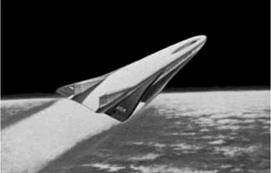
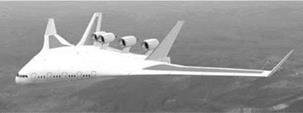 Figure 1.15. Blended wing body aircraft (Airbus)
Figure 1.15. Blended wing body aircraft (Airbus)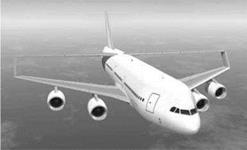 surface, almost exclusively over water (Figure 1.17). (A ground-effect vehicle is not really new: The Russians built a similar vehicle called the “Ekranoplan,” but it did not appear in the free market economy.)
surface, almost exclusively over water (Figure 1.17). (A ground-effect vehicle is not really new: The Russians built a similar vehicle called the “Ekranoplan,” but it did not appear in the free market economy.)











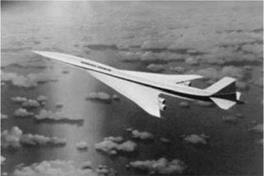 material (e. g., adaptive structure) will gain ground, microprocessor-based systems will advance to reduce weight and improve functionality, and manufacturing methodology will become digital. However, unless the price of fuel increases beyond affordability, investment in aerodynamic improvement will be next in priority.
material (e. g., adaptive structure) will gain ground, microprocessor-based systems will advance to reduce weight and improve functionality, and manufacturing methodology will become digital. However, unless the price of fuel increases beyond affordability, investment in aerodynamic improvement will be next in priority.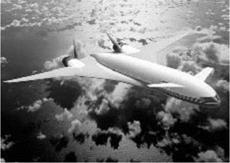


 have been incorporated, improving the B737’s 50%.
have been incorporated, improving the B737’s 50%.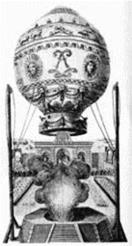

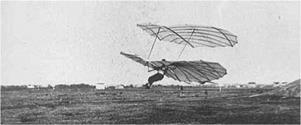
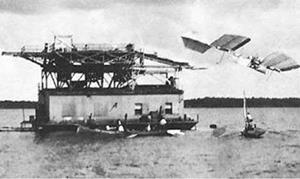 Exactly a century later, a flying replica model of the Wright flyer failed to lift off on its first flight. The success of the Wright Brothers was attributed to a freak gust of wind to assist the liftoff. A full-scale nonflying replica of the Wright flyer is on display at the Smithsonian Museum in Washington, DC, and the exhibit and others are well worth a trip.
Exactly a century later, a flying replica model of the Wright flyer failed to lift off on its first flight. The success of the Wright Brothers was attributed to a freak gust of wind to assist the liftoff. A full-scale nonflying replica of the Wright flyer is on display at the Smithsonian Museum in Washington, DC, and the exhibit and others are well worth a trip.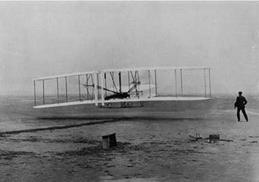
 A brief historical background
A brief historical background